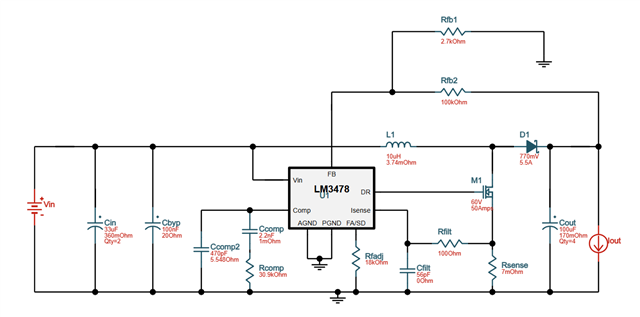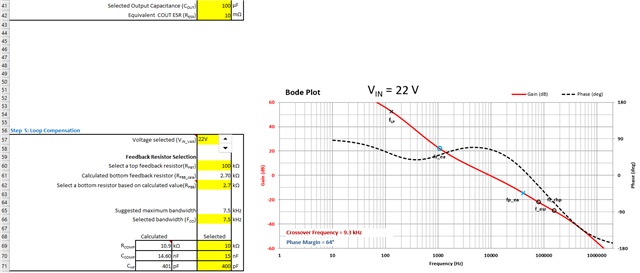Other Parts Discussed in Thread: LM5155
Tool/software:
Hi TI experts!
I have encountered an issue with the boost converter based on the LM3478. I've used Webench to design the schematic, so I was pretty sure all should've work well. But it doesnt.
The drive output is constantly high, thus the mosfet is on and shorting the circuit through the inductor. Whatever the input voltage is, the duty cycle is always 100%. There are no load at the output.
My power supply triggers its protection at 5A. After experimenting a while, the only way I could get duty cycle less than 100%, is leaving the Isense pin floating. Perhaps, the Isense resistance is too small? Or there is another issue with the IC or the design?
Please advice! 


